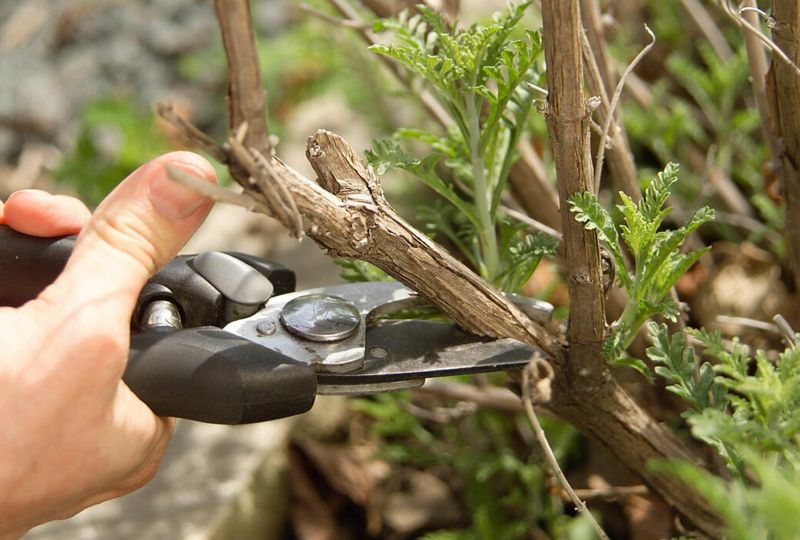Pruning is essential in tree care to help maintain tree health, safety, and aesthetics. While there isn’t a universally “worst” time to prune trees, pruning at the right time helps to avoid potential negative outcomes. Read on for tips on timing, best practices, and what to avoid when it comes to tree pruning and trimming.
Why Timing Matters in Tree Pruning
The timing of tree pruning depends largely on your reasons for pruning. For example, pruning to remove hazardous branches that pose a safety risk should always be done immediately, regardless of the season. But for other reasons, the optimal pruning time can vary depending on factors like:
– Safety Concerns: If branches are dead, damaged, or pose a risk to people or property, prune immediately!
– Flowering and Fruit Production: Pruning can impact the amount and timing of blooms or fruit production.
– Tree Species: Different species respond differently to pruning times. For example, pruning a tree prone to disease during vulnerable periods could further spread the disease.
– Tree Age: Younger trees require formative pruning to establish strong structures, whereas mature trees may need less frequent pruning.
– Climate and Weather: Local climate and weather patterns can influence when it’s safe and effective to prune.
– Budget and Maintenance Plans: Pruning is often part of a broader tree care plan. Balancing cost and tree health priorities can also dictate timing.
What’s the Worst Time to Prune Trees?
While there isn’t an absolute “worst” time to prune trees, certain times can be less ideal, particularly if the trees are healthy and pruning isn’t urgently needed. The main exceptions are trees with dangerous limbs or structural issues, which should be addressed immediately to reduce risks.
Some less-than-ideal times for pruning include:
– Disease Susceptibility: Pruning trees during peak disease seasons can leave fresh cuts vulnerable to infections. For example, pruning elm trees during the growing season increases the risk of Dutch elm disease.
– Sap Flow in Spring: Trees like maples and birches produce heavy sap flow in early spring. Although this “bleeding” isn’t harmful, it can be unsightly.
– High-Heat Periods in Summer: Pruning during hot, dry conditions can stress trees further, leading to slower wound healing and increased pest vulnerability. When pruning during high heat, make sure trees are properly irrigated and consider deep watering.

Special Considerations for Flowering and Fruit Trees
Pruning flowering and fruit trees requires careful timing to ensure optimal bloom and fruit production. Flowering trees can be categorized into those that bloom on early (old) wood and those that bloom on late (new) wood.
– Trees That Bloom on Old Wood: Many spring-flowering trees, such as lilacs and magnolias, develop their flower buds on wood produced the previous year. For these trees, pruning immediately after flowering is best to avoid removing next year’s buds.
– Trees That Bloom on New Wood: Trees like crepe myrtle or butterfly bush flower on new growth. These are best pruned in late winter or early spring to encourage vigorous growth and abundant blooms.
– Fruit Trees: Pruning fruit trees can improve sunlight penetration, air circulation, and fruit quality. The ideal time is typically late winter to early spring when trees are still dormant but ready to initiate new growth. Proper pruning shapes the tree, removing crossing or crowded branches, which enhances fruit production.
How to Identify the Right Time to Prune
Identifying the correct pruning time for your tree requires understanding the species, its growth habits, and the primary reason for pruning. Here are some guidelines:
– Winter Pruning: Ideal for most deciduous trees, as it encourages vigorous spring growth. Here are 5 Benefits of Winter Pruning.
– Spring Pruning: Suitable for trees prone to bleeding sap in early spring (like maple and birch); prune in late spring when sap flow decreases.
– Summer Pruning: Best for slowing the growth of a tree or reducing the size of overly vigorous trees.
– Post-Bloom Pruning: For trees that bloom on old wood, prune right after the flowering period.
Arborist consulting can also provide tailored advice based on your tree’s specific needs and your local climate.
Make Pruning Cuts Correctly
Proper pruning techniques are just as important as timing. Making the right cuts can promote healthy growth and prevent long-term damage.
– Prune at the Branch Collar: This is the swollen area where the branch joins the trunk or another branch. Cutting just outside the collar helps the tree seal the wound more effectively.
– Three-Point Cut Method: Use this technique to safely remove larger branches. First, make an undercut a few inches away from the branch collar, then a second cut from the top, slightly further out. Finally, make the third cut just outside the branch collar to remove the stub.
– Avoid Harmful Practices: Avoid topping, flush cuts, stub cuts, and lion’s tailing (removing too many inner branches). These practices can damage the tree’s structure and leave it vulnerable to disease and decay.
The Consequences of Pruning at the Wrong Time
Pruning at the wrong time or using improper techniques can have several negative consequences, including:
– Reduced Flower and Fruit Production: Pruning at the wrong time can reduce or eliminate flowers and fruits for the season.
– Increased Disease Risk: Cutting during vulnerable periods can expose the tree to pests and diseases.
– Structural Weakness: Improper cuts can lead to weak branch attachments, making the tree more susceptible to storm damage.
Questions about the best and worst times to prune or proper pruning techniques? Wonder no more! Contact us for a free assessment to help your trees stay healthy and beautiful!





